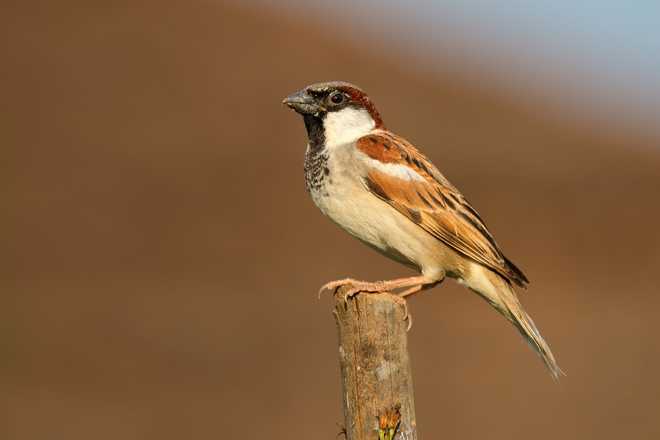Tejdeep Kaur Kler and S S Hundal
Five different species of sparrows are found in India. Out of the five, only one species is migratory while the rest are native to the Indian subcontinent. The most abundant and widespread is passer domesticus (common sparrow, gharaan di chidi). It is closely associated with human habitation and cultivation since the time of recorded history. In the past 20 years, many researchers have observed the feeding behaviour of the house sparrow.
It feeds mostly on grains and seeds like corn, oats, wheat, and sorghum as well as livestock feed and in cities, discarded food. House sparrow is chiefly a granivorous bird to the extent that earlier researchers have recorded it as a pest. The most preferred habitats of the house sparrow are low height shrubs in gardens in urban areas and thorny bushes, shrubs, cattleshed with bricks, unplastered walls having crevices, cavities and wooden ceiling of old houses in rural areas for roosting and nesting. It loves human settlements and often nest on or around human homes. Nests are most frequently built in the holes and other crevices of houses in natural habitat.
Since 2010, World Sparrow Day is being celebrated globally on March 20 to spread awareness regarding the house sparrow and other common birds. The day also celebrates and appreciates the beauty of the common biodiversity in urban environments.
Scientists of the All India Network Project on Vertebrate Pest Management (Ornithology section) and UGC-sponsored project on Monitoring of House Sparrow Population and breeding ecology in rural and urban areas of Punjab state have made efforts to take data on house sparrow population.
Field surveys have revealed that the sparrow population has made a comeback in different pockets of Punjab. Different dimensions of wooden and earthen artificial nests have been tested and standardised to make them bird friendly and bird preferred. The house sparrow preferred different sizes of artificial nests at different places but the most preferred wooden artificial nest is 28 cm in height x 16 cm in width with an opening of 5 cm at a height of 2.7 cm on the front cover of the box with a lid of 18 cm x 21 cm. The earthen pots are oval in shape and measured about 14 cm height with a lid and an opening of 5 cm. It has also been observed that the Indian magpie robin (copsychus saularis) prefers artificial nests designed for house sparrow. Many farmers have been appraised with the standard design of artificial nests through TV/radio talks with an objective to involve them in the conservation of such birds.
Special emphasis is being given to the sensitisation of farmers and common citizens during the kisan melas. Large number of farmers have given positive feedback about successful occupation of artificial nests by birds.
How to attract the sparrows
It is easy to attract house sparrow to the place where you live, if there is sufficient population of this bird in the locale selected. The following methods can be used effectively:
- Planting a variety of native trees, shrubs and grasses provide natural shelter and cover for birds.
- Artificial nesting provisions to house sparrow may prove useful.
- Thorny bushes and shrubs make great homes for these birds.
- Birds can be attracted to yards by offering them food in the form of seeds and grains.
- Water feeders should also be placed in yards to attract the birds.
Our awareness is to be drawn, not only to these common birds but also to other species like raptors, owls, owlets, kites, which are equally important to our agrarian ecosystem and an integral part of the food chain and biological pest control.
(The writers are senior ornithologist and professor of zoology, respectively)









